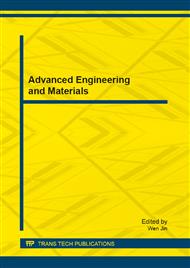p.535
p.541
p.546
p.550
p.556
p.561
p.570
p.574
p.578
Optimization of the Compositions of PEG/PMMA Binder System in Ceramic Injection Moulding via Water-Debinding
Abstract:
In this study, we have made a comprehensive investigation on optimization of the compositions of PEG/PMMA binder system for water-debinding. An orthogonal test was designed and L9(33) table was chosen to investigate the influence of the molecular weight of low molecular PEG (L-PEG), high molecular PEG (H-PEG) and the percentage of L-PEG in PEGs on flaws of the injection moulded compacts after water-debinding. In addition, the ratio of PMMA content to PEGs content on flaws is also investigated. Four regions were defined as high stress region, safe debinding region, low binder removal rate region and unavailable injection region respectively. It is believed that our work could provide comprehensive and convincing principles for the manufacturing of injection-moulded ceramic parts via water-debinding.
Info:
Periodical:
Pages:
556-560
Citation:
Online since:
February 2013
Authors:
Keywords:
Price:
Сopyright:
© 2013 Trans Tech Publications Ltd. All Rights Reserved
Share:
Citation:


